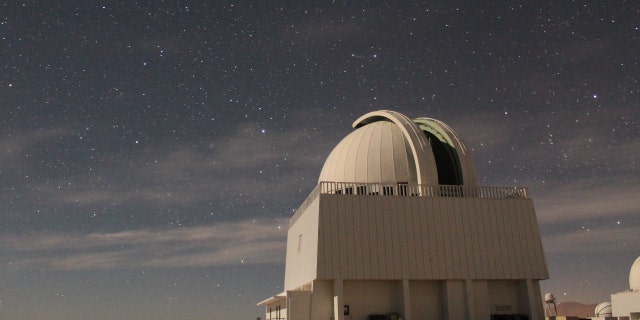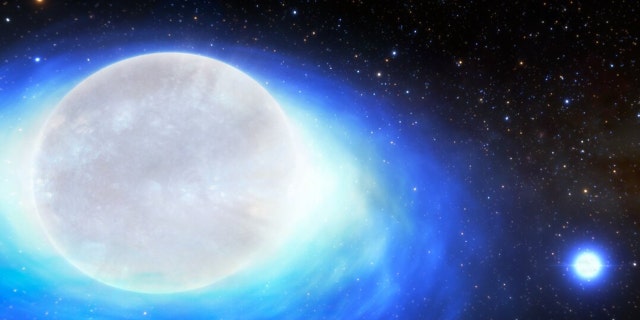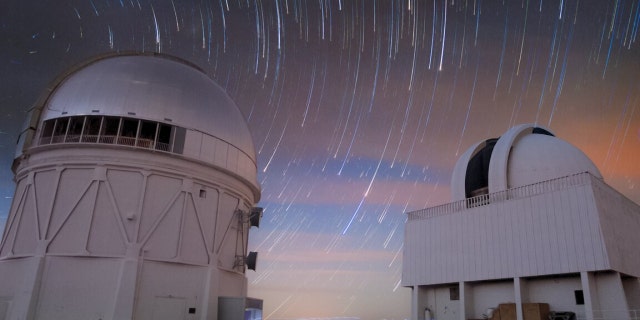

The arrangement, known as CPD-29 2176, is so astonishingly rare that only about 10 such systems are believed to exist in the Milky Way galaxy.
CPD-29 2176, is located about 11,400 light-years from Earth and was first identified by NASA’s Neil Gehrels Swift Observatory.
VIDEO SHOWS 'MYSTERIOUS' WHIRLPOOL SPIRAL FLYING OVER HAWAII SKY

The SMARTS 1.5m telescope in Chile (Rodrigo Hinojosa )
Upon further observation with the telescope, the scientists were able to deduce the orbital characteristics and types of stars that make up this system: a neutron star that was created by an ultra-stripped supernova and a closely orbiting massive star that is in the process of becoming an ultra-stripped supernova itself.
An ultra-stripped supernova is the end-of-life explosion of a massive star that has had much of its outer atmosphere stripped away by a companion star.

An artist’s impression of the first confirmed detection of a star system that will one day form a kilonova – the ultra-powerful, gold-producing explosion created by merging neutron stars. (NOIRLab)
MORE THAN 3 BILLION STAR, GALAXIES ARE CAPTURED IN A MASSIVE NEW SURVEY
"The current neutron star would have to form without ejecting its companion from the system. An ultra-stripped supernova is the best explanation for why these companion stars are in such a tight orbit," the paper's lead author, Noel Richardson of Embry-Riddle Aeronautical University, said in a statement. "To one day create a kilonova, the other star would also need to explode as an ultra-stripped supernova so the two neutron stars could eventually collide and merge."

This long-exposure photograph shows the motion of stars during the night above the Blanco 4-meter telescope (left) and the SMARTS 1.5-meter telescope (right) at Cerro Tololo Inter-American Observatory in Chile, a program of the NSF’s National Optical-Infrared Astronomy Research Laboratory. (Credit: CTIO//NOIRLab/NSF/AURA/D. Munizaga)
It will take at least a million years for the massive star to end its life as a titanic supernova explosion and leave behind a second neutron star. The authors said the stellar remnant and the pre-existing neutron star will need to draw together before merging and noted that the resulting kilonova explosion will produce much more powerful gravitational waves and leave behind a large amount of heavy elements, including silver and gold.
